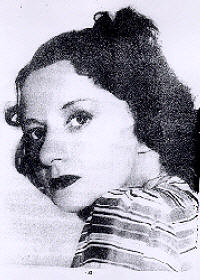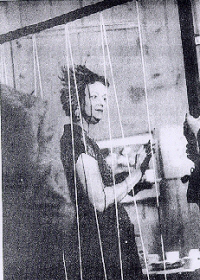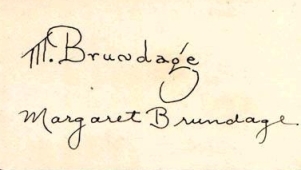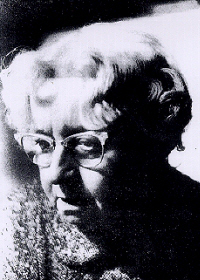
| ©Copyright 2002-2008 [Shawn Nacol] All rights reserved |
Still Under Construction in here
Margaret Hedda Johnson Brundage was the lone woman to make her reputation as a cover artist in the lurid pulp magazines. Brundage's style and her choice of pastel as a medium were heavily influenced by the look and content of American women's magazines, but the content is pure Weird Tales.
After Margaret finished the Academy, she began doing freelance fashion designs for various newspapers. She met her future husband, Myron "Slim" Brundage, while working at a Bohemian social club called the Dill Pickle*, known for its ample supply of radical ideas and bootleg whiskey. Slim was something of a huckster, and had lived as a hobo for a time. They married in 1927, and Margaret gave birth to Kerlynn Byrd Brundage soon after. Their marriage was not a happy one; As years went by, Slim Brundage would run off periodically and even take up with girlfriends for extended periods. They were finally divorced in 1939. Decades later, Slim would go on to be a fixture of Chicago's intellectual counterculture. In 1931, Brundage's mother suffered a fall that fractured her hip. As a Christian Scientist, she refused medical treatment and in 1932 was forced to move in with Margaret and Slim, remaining crippled until her death in 1940. By this time Slim had proved to be, in Margaret's words, "worthless as a provider". In the depths of the Depression, female artists were in slight demand, and newspapers had little need for fashion sketches. In an attempt to support herself and her little family, Brundage began soliciting illustration work by phoning periodical publishers based in Chicago. Margaret was eager to get away from black and white drawing and into color if possible. Margaret tracked down several candidates in the Chicago phone directory, eventually meeting with the publishers of Weird Tales magazine. Brundage's Weird Tales heyday spanned from 1932 until 1939, but she ultimately created a total of 67 covers for them, creating a body of work unmatched for its lurid excess, even in the feverish world of pulp cover art. For several years, the readers were not even aware that "M. Brundage" was a woman and many were shocked when her sex was revealed. At a time when lunch cost a nickel and secretaries made $25 a week, she received $90 a cover. For long period of time, Margaret Brundage was the de facto Queen of Weird Tales. For the years that Weird Tales was published in Chicago, Margaret's artwork graced most of its covers. And many a boy read the stories as an afterthought after acquiring and hiding those magazines. Brundage's covers are credited with having saved Weird Tales during the depths of the Depression and set standards for the portrayal of "Women in Peril" that still resonate in pop culture today. In later years, Brundage was bitter and frustrated at being forgotten by an industry she helped save during the Depression. Later on in the 1960s , she helped out pulp aficionados who sought her aid in establishing early sci-fi conventions, only to have precious originals stolen from her by Weird Tales fans who realized their value and talked her into "loaning" them. In her twilight years, Brundage struggled to support herself and made appearances at an annual Chicago Art fair to sell her work. Margaret Brundage died in 1973, largely forgotten, but still painting and sketching in Chicago. Today, a resurgence of interest in pulp ephemera have made her a minor cult celebrity. Fragile Brundage originals are among the most coveted and prized of pulp artwork, commanding prices upwards of $60,000...
*A History of the Dill Pickle Club A Chicago social club, established in 1917, to provide an unconventional meeting-place for the uninhibited and free-thinking, including Socialists, atheists, anarchists and liberated women, lecturers and soapbox orators, artists, actors, playwrights, literary hopefuls, and a range of Bohemian types. The Dill Pickle Club was founded by John (Jack) Jones, a former labor activitist, in 1916. Called at first the Dil-Pickle, the club was chartered in 1917 as a "non-profit organization for the promotion of arts, crafts, literature and science." One of Chicago's best-known Bohemian locales, the club became a free-speech forum, frequented by labor movement radicals, drifters, rebellious academics, literary figures, prostitutes, actors, tourists and left-wing artisans of all sorts. To find the place, both the famous and infamous were exhorted to squeeze "Thru the Hole in the Wall Down Tooker Alley to the Green Lite Over the Orange Door." 22 Tooker Place was located just south of the Newberry Library on Dearborn Street, and a sign outside read "step high stoop low leave your dignity outside." Those who entered would find a variety of fare - lectures or debates on controversial topics, perhaps a play, even a dance or a swinging party, supplemented by coffee, tea, sandwiches, and bootleg whiskey. The atmosphere of the club was an enjoyable mix of the radical, the rough, the erudite, the creative and sometimes the inane. And there was always plenty of stimulating talk. The "Pickle" was frequented by such literary figures as Carl Sandburg, Edgar Lee Masters, Maxwell Bodenheim, Ben Hecht, Charles MacArthur, Sherwood Anderson and Floyd Dell and many others. Besides the tough owner, Jack Jones, another mainstay of the club was Ben Reitman, lover of Emma Goldman. Noted Chicago doctors, professors and other local intellectuals were among the assorted lecturers, for throughout the twenties, Jack Jones and the Dill Pickle Club played host to all sorts of people. As the depression progressed, the Dill Pickle's fortunes declined, and in 1932 tax difficulties caused its demise.
| ||||||||
|



